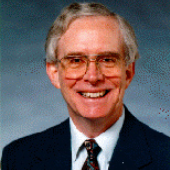Bruce A. Finlayson

Bruce A. Finlayson is Professor Emeritus of Chemical Engineering at the University of Washington. He received his B.A. and M.S. degrees from Rice University and the Ph.D. degree from the University of Minnesota. He served for two years as a Lieutenant in the U. S. Navy, working at the Office of Naval Research in Washington, D.C. He has taught chemical engineering and applied mathematics at the University of Washington for over forty years.
In 1983 he was appointed the Rehnberg Professor of Chemical Engineering at the University of Washington and, that same year, received the prestigious Walker Award from the American Institute of Chemical Engineers for his contributions to chemical engineering literature. He is the author of four books, The Method of Weighted Residuals and Variational Principles, (Academic Press, 1972) and Nonlinear Analysis in Chemical Engineering, (McGraw-Hill, 1980), Numerical Methods for Problems with Moving Fronts (Ravenna Park Publishing, 1992), and Introduction to Chemical Engineering Computing (Wiley, 2006). In addition, he has converted some of the numerical analysis lessons to the Web. He has authored or co-authored over 100 papers and has served on nine editorial boards for technical journals. From 1989 through 1998 he was Chairman of the Department of Chemical Engineering at the University of Washington, and in 1994 was inducted into the National Academy of Engineering. In 1998 he was elected Vice-President and in 2000 served as President of the American Institute of Chemical Engineers, a professional organization that served 57,000 chemical engineering members. He is listed in Who's Who in America.
He was a Director and is a Fellow of the American Institute of Chemical Engineers and has served as the Chairman of the Computers and Systems Technology (CAST) Division. He was a trustee of CACHE Corporation (Computer Aids for Chemical Engineering Education), which encourages the use of computing in chemical engineering education. He has served on the Board on Chemical Science and Technology of the National Research Council and the Chemical Sciences Roundtable.
His papers concern the modeling of chemical reactors, the flow of polymers, chemical flooding of oil fields, modeling the swallowing process, modeling the evaporation of metals by electron beams, and recent work involves modeling in microfluidics and the flow of ferrofluids. His ferrofluid work (begun in 1970) has shown the validity of the equations for heat transfer and flow in laminar and turbulent cases. His interests include modeling in chemical engineering and the use of computers in education. He has developed software for educational use on personal computers, and helps his students prepare multimedia lessons for their classes. One class won the Undergraduate Computational Engineering and Science Award from the U.S. Department of Energy. His recent educational work is with undergraduate researchers doing computational fluid dynamics.
In addition to his professional interests, Bruce Finlayson plays the cello and enjoys running.

